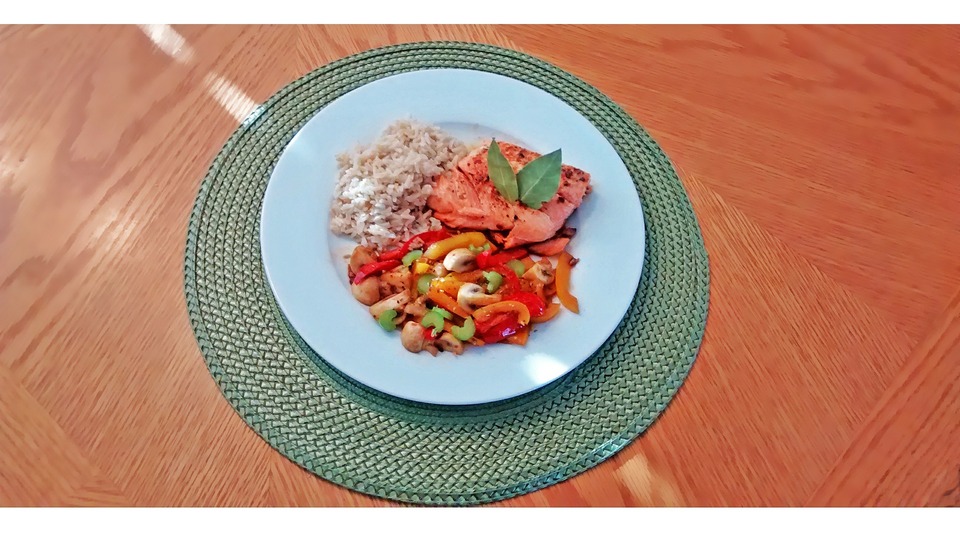Photo Credit: Isabelle Pinet from Pixabay
One of the latest memes making their way around the Internet is “You can’t work yourself out of a bad diet.” It sounds obvious, but it is still a fact. A lot of well-meaning people would like to think that as long as they work out “some” during the week, they can eat anything they want. Unfortunately, this is not true.
Dieting is a tricky business and what works for one person will not work for another. If diet and fitness were easy everyone would do it and we would all be in shape. But, like most things worth doing, it takes time, work, and effort.
There are a million diets out there. Some are good, some are bad, and some are downright dangerous. What you want to focus on is a diet that works for you. Do not do a diet that you know you cannot follow. No matter how great a friend or work colleague tells you it is, if you don’t like the food that they tell you to eat, you will not accomplish your goals.
Years ago, while looking for a diet, some friends told me about a wonderful program they were on and how much weight they had lost. I could see it had been successful for them. They looked great. I asked about the diet and they explain that it was easy to follow, but you had to basically eat the same thing at every meal.
I listened intently and followed the directions to a “T.” I had just not counted on one thing. That one thing was that I had to eat beets for every meal!!! Now, if I liked beets that would have been great. If I kind of liked beets, it would have been tough. But I hate beets, so it would have been an impossible task. There is nothing wrong with beets. I just do not like them.
For a diet to work, it has to be practical and it has to be reasonable. It has to be full of foods that you can eat and enjoy. It can’t leave you hungry and frustrated. Most people don’t quit their diet because they want to stay unhealthy or they lack willpower. They stop their diet because the food sucks and they are always hungry!
In the Western world, we don’t eat just for nutrition. We eat for pleasure. We eat for comfort. We eat because we can.
Changing your diet is as much about changing your mindset as it is about altering what you eat. Have you ever asked yourself this question when you open your fridge? Am I really hungry? Am I craving nourishment?
So, next time you go into the kitchen, ask yourself, “Am I hungry or am I bored?” “Am I eating to get healthy or do I just need comfort?” “Am I having that big bowl of ice cream just because it makes me feel good?”
One of the things I did during my first giant weight-loss program was to reframe my mind when I was eating. I would ask myself, “Is this real hunger?” “Is my body looking for nutrients?” I developed my own vocabulary and I used it.
I started asking myself, “Is this real hunger or ‘mouth hunger’?” And “mouth hunger” was my way of saying, “Was I just eating because I was bored, worried, stressed or needed something to do?” Most of the time, I answered that my hunger had nothing to do with nutrition. I was just eating because I wanted to.
Understanding that concept and creating my own mindset allowed me to lose almost 75 pounds. I have used those concepts again recently and now weigh as much as I did in college.
So, how do you start back on the road to positive eating???
Working with the ISSA and their nutrition folks, I now have a better understanding of diet and that the concept of portion control is paramount.
Using ISSA standards, I offer the following recommendations for anyone interested in taking back control of their life and their eating:
Assuming you eat about four meals per day, this is what we find to be a great starting point:
For each meal, men might begin by eating:
-
- 2 palms of protein-dense foods
- 2 fists of vegetables
- 2 cupped handfuls of carb-dense foods
- 2 thumbs of fat-dense foods
And for each meal, women might begin by eating:
-
- 1 palm of protein-dense foods
- 1 fist of vegetables
- 1 cupped handful of carb-dense foods
- 1 thumb of fat-dense foods
Also:
-
- Eat slowly and stop eating when you’re 80% full.
- Follow hunger cues. Eat more or less, based on your appetite.
- Choose mostly whole foods with minimal processing.
- Choose local or organic foods when possible.
- Use smaller or larger plates based on your own body size.
This will actually be more food than you expect. But it will be healthy eating and will remove the bad-food intake from your day-to-day eating. Remember, make the most of your meals and enjoy them. Choose what you eat carefully and don’t overindulge in snacks and other “junk” food.
Follow these tips and you will find success.
JBS
